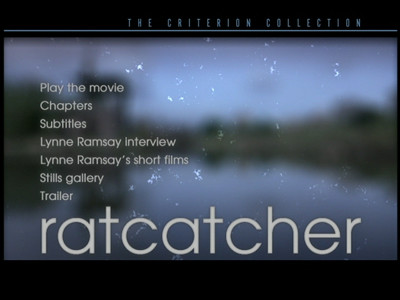
There is a remarkable, intriguing moment in Lynne Ramsay's 1999 film Ratcatcher that I either forgot in the six years since I first saw it or that I didn't fully absorb the first time. It's actually the metaphorical hinge on which the film turns at its 3/4 mark, a sub-Arthurian image that changes the world that Ramsay has created, lifting the veil of childhood from the eyes of her pre-adolescent hero, James (William Eadie), and breaking the spell that hangs over his life.
Convinced he is in love with an older girl, Margaret Anne (Leanne Mullen), James returns to the spot in the filthy canal where a group of mean teenage boys dumped the far-sighted girl's glasses much earlier in the film. James is intent on fishing them out for her, but he won't go in the water, hasn't been able to since he and his friend Ricky were playing around there and the other boy drowned. If he can retrieve Margaret Anne's glasses, he will restore her sight; alas, he is unable to drag the spectacles from the water, to complete his act of chivalry. He gives up.
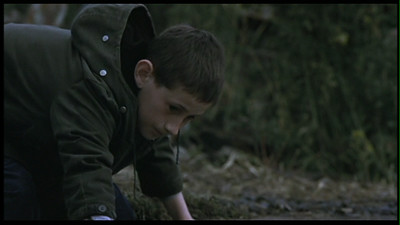
Dark clouds roll in. Ironically, so do government scabs sent in to clean up all the trash that has been tossed around the poverty-stricken tenements where James and his family live. Ramsay has set her debut feature in 1970s Glasgow during a garbage strike that left the town buried in rubbish and pestilence. With the strikebreaking, something meaningful is lost, a moral stand subverted; so is it for James when he can't get at the glasses. The world of fantasy where he and the other children played is being swept away. James' mentally challenged friend, the one-time animal lover and generally good-natured Kenny (John Miller), turns against him, and he also sees that Margaret Anne has returned to the boys who abuse her, the ones who ditched her glasses in the first place. The night before she let James sleep next to her when he had nowhere else to go, but now she is letting the teens have turns with her in a rundown shed.
Nothing looks the same as it did just yesterday.
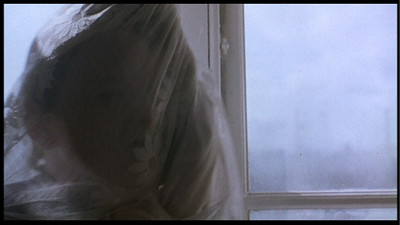
From its very first frame, Ratcatcher has a haunting quality that isn't easy to shake. Ramsay opens the film on a slow-motion shot of a boy dancing in circles, a lace curtain draped over his head like a shroud. It is Ricky, and he is knocked out of his reverie by a slap from his mother. It's a moment both harsh and comical. Ricky's mother is going to take him to see his father, but he'd rather stay and play, so he runs off. That's when he and James start messing about in the canal, when James knocks the boy down and he doesn't get up again. It's only then that we realize who the real protagonist of this story is.
I mentioned in my last review how Ratcatcher had much in common with David Gordon Green's George Washington, and the main comparison lies in the central events of both movies: one child dying when children are left to play in places where they shouldn't. Green portrayed the poverty of an abandoned town in the American South of the late '80s/early '90s, a kind of wasteland of empty and half-destroyed buildings. Ramsay's 1970s Glasgow has a similar otherworldly look. The garbage bags cover the ground, and the children run across them, toss them around, and break them open in search of rats and other vermin. They play in the dirty canal and in unattended spots along it. This leaves the pre-adolescents and the teenagers of both movies to deal with things they should never have to deal with. Like the children in the Lord of the Flies, they impose their own order.
Not that the adults aren't around, in both movies they are shown struggling, too. The railworkers in George Washington desire better working conditions, just as the striking garbage men do in Ratcatcher. Ramsay's film has a stronger family unit, with James' two sisters, his caring Ma (Mandy Matthews), and his coarse Da (Tommy Flanagan), always half in the bag, always half-asleep. When Kenny falls into the canal, Da jumps in and saves him, committing the act of heroism that James couldn't with Ricky, widening the gap that already exists between father and son. James' Da likes football, James does not, a kind of classic split between man and boy. It was a fight over football shoes after a ceremony honoring his father that sends James running to Margaret Anne, and there is a direct connection between Kenny's rescue and James trying to rescue the glasses.
James is the silent child observer in this movie. He is in between childhood and being grown up, as shown by the adults of his life giving him new shoes that are alternately too small and too big. He sees things he is not supposed to, sneaks into rooms when people are sleeping, touches objects he's not meant to touch. He is definitely witness to the undercurrent of violence that runs throughout Ratcatcher. The roving pack of boys even catches up with his Da, rewarding him for his heroism by attacking the drunken man in the street. James' saving grace is that he is not yet violent himself. What happened to Ricky was an accident, and the strength of his relationship with Margaret Anne is that he hasn't developed enough to treat her as a sex object. When they first meet, the boys have just finished being rough with her, leaving a bloody sore on her pale white knee. James doesn't understand what it means, and when Margaret Anne asks him if he wants to touch it, he places his hand on her thigh instead, just above the blazing red wound. It's a tender moment, and tenderness flows from it. Their relationship is, if not mother and son, then older sister and younger brother. When the other boys push him toward her sexually, he just lays on top of her, enjoying the loving contact. Later, he even helps rid her hair of lice, which his mother had just done for him. It's a kind of honest affection they both seek, and something she particularly does not find when offering herself to the other boys.
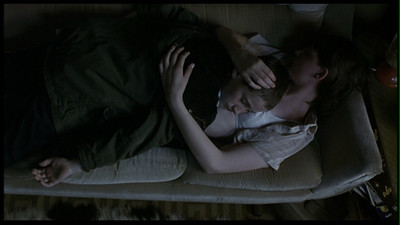
The boy wants to peer into the adult world, but he expects it to conform to what he already knows about life rather than he conform to it. It's his searching that leads him to his greatest discovery. At one point, he boards a bus to try to find out where his older sister (Michelle Stewart) is going off to when she's all tarted up. He climbs to the second deck of the bus and rides it to the end of the line. When the driver kicks him off, he discovers he is in the not-yet-opened suburbs where his family has been expecting to move as soon as the town council gives them the go-ahead. In essence, he has found the better life they have been waiting for, but he's gotten there early, before it's been populated. He wanders through the empty homes, exploring this quiet idyll. In one home, he looks out the kitchen window and sees a golden field of wheat. It looks like the field in Andrew Wyeth's 1948 painting, Christina's World, full of the same promise and the same ambiguity. The painting has an elusive, dreamlike quality that brushes harshly against its realism, which would also describe the appeal of Ramsay's direction. She has a painterly eye, using nearly still images to create her mood, montage as collage, such as cutting from a violent attack to a crying cat and then to fruit sauce being dripped onto an ice cream cone. The sticky sweetness of violence.
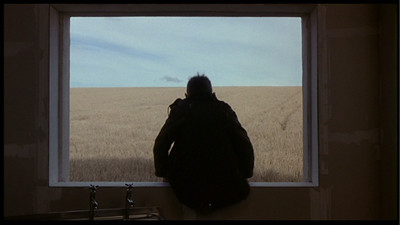
To return home, James must cut through this field. And yet, when he returns to the housing tract after his failed quest to retrieve Margaret Anne's glasses, it's not the same. It's raining, all the doors of the houses are locked, and when he looks through the same window, this time from the outside and peering in, he sees something that sends him running back to the city. We never see what it is. My first assumption was that maybe another family had already moved in, but I think it's just the darkness that has no descended keeping him from actually seeing anything. As Ramsay pans back, there is only shadow. It's a tragic poetry: trying to restore Margaret Anne's vision has instead made him see more clearly, and as any adult knows, the more you learn the less clear things become.
All that's left is to try to find some kind of absolution. James returns home and sleeps amongst his family. When he awakes, it's still dark out, they are all still slumbering. He goes into his mother's room, and in a wonderful little detail flashing us back to an earlier scene, fixes her stockings, covering the big toe that has poked through a tear. He then goes to the canal and throws himself in. Is he getting the glasses? Or is he just cleansing himself of his sins, going through the baptism that took Ricky and then nearly took Kenny?
We'll never know, as Ramsay leaves him hanging there rather than showing us his swim. We do know he's okay, that the family does get their home and we see their pilgrimage there, but then Ramsay takes us back to the still image of James in the water so that it's the last thing we will ever see. It's meant to remind us of that other important image of hope in Ratcatcher, of the little white mouse Snowball on his way to the moon.
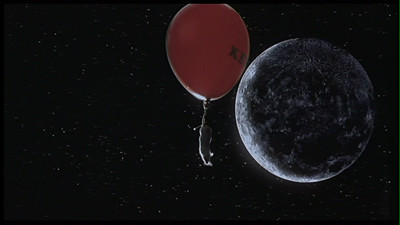
For Kenny's birthday, he received a mouse as a present. When the other boys get ahold of her, they play a game of keepaway from Kenny, telling him that his mouse can fly as they toss it back and forth. When James catches Snowball, he returns her unharmed to her owner, tells the boy it's all right, that Snowball will later fly to the moon. It's a kindness that the growing James will later wreck, but a kindness just the same. Thinking he will help Snowball along, Kenny ties her tail to the string on his red balloon, and she drifts off into the upper atmosphere. In the dreamy movie's one completely fantastical scene, Lynne Ramsay follows Snowball on her flight, from the Earth up into space and all the way to the moon.*
So, too, has she tied James to a balloon, and Ratcatcher is the document of his flight out of his cruel world and into something better.

* Compare also to the Laika fantasies in Hallström's My Life as a Dog.

No comments:
Post a Comment